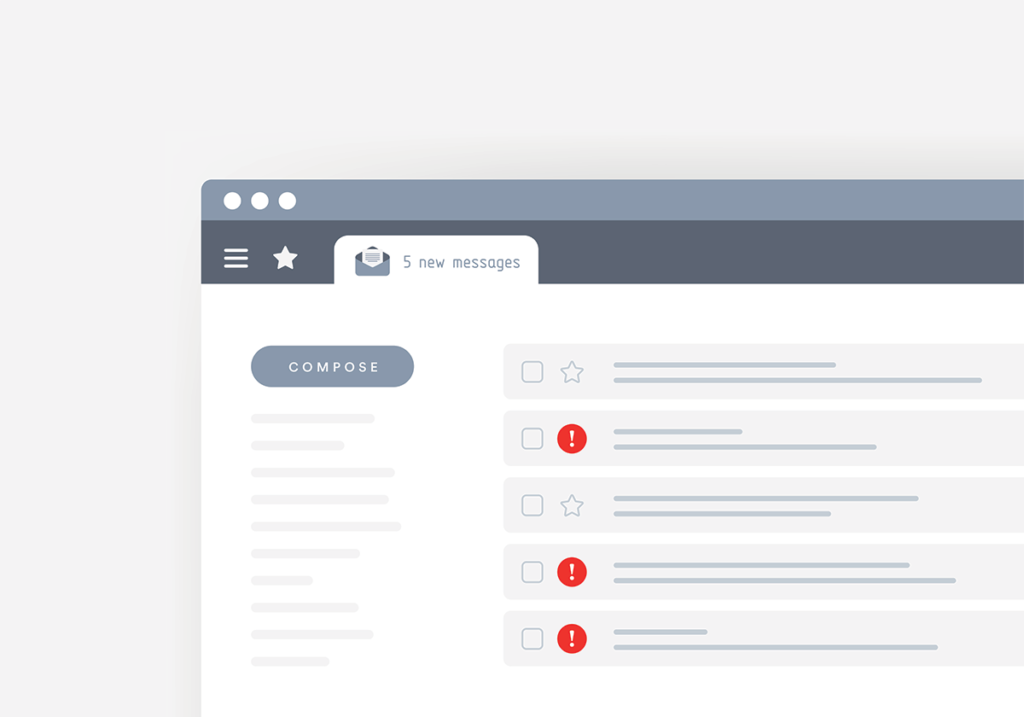Some could argue that the hardest part of email marketing is getting the open. You have mere seconds to get someone’s attention in their inbox. You are competing with everyone else for that open and their attention, and well, it’s no easy task. If you don’t get them to open the email, then you have a zero percent chance of them to click and drive traffic back to your offer or website.
In general, a decent open rate is anything 20% or higher. If you are seeing your open rates lower than this, then you’ve got some work to do.

So why do your open rates suck? You may be putting all the blame on the subject line and you may be right, but doing a few split tests will solve your problem. The issue could be deeper than that.
There are many factors that impact your open rates, and it has very little to do with your subject lines.
Here are four reasons why your open rates suck:
- Your “From” Name. Most likely you are using just your business name as your From Name. We get it. This makes sense. It is clearly letting someone know who the email is from. The problem with this is that it lacks any sort of human connection between you and your subscriber. Even in a digital world, humans still like to feel like they are communicating with a real human being.
So how do you solve this? You update the “From Name”.
Wouldn’t you open an email from someone named Jane vs just a business name?
This is an easy way to help you stand out in the inbox. When thinking of a From Name, it’s better to use a real person’s name that actually works at the company. It makes it more believable in any case you happen to call the company and mention that person’s name.
Here are some examples:
John @ InboxMailers
John Gardner
John Gardner – Support Tech
A good rule of thumb is to use a few From Names to bump up your open rates. Select a From Name that matches the email content.
- You’re sending to the wrong people. There’s probably a chunk of people on your list who are no longer interested in your emails, service, or product anymore. There’s probably also a good chunk of email addresses that aren’t even real: hard bounces and spam traps.
Continuing to mail these people is hurting your email open rates. This is why it’s so critical to implement engagement-based segments into your plan.
This should go without saying, but be sure to scrub your list regularly to remove bad email addresses.
Many marketers assume that emailing their entire list will generate more conversions and high returns. This could not be farther from the truth. Instead, it’s better to be more intentional about who you are sending to and how their engagement with your emails is helping your sender score and IP health.
Sending to the wrong people will hurt your overall email deliverability and it can take a long period of time to resolve your sending issues.
- You have a poor Sender Score. This one is HUGE. First, if you don’t know what your sender score is, do a quick google search and figure this out. There are a bunch of free websites that can give you this information.
Your sender score is very similar to a credit score. It can range between 0 and 100. It measures the health of your email program and sender reputation. It is a clear indicator of how mailbox providers such as Gmail, Yahoo, and Outlook view your IP address.
If you have a low sender score, then it explains why your open rates suck. Your emails probably aren’t getting delivered or going straight into the spam folder. Your audience doesn’t even have the opportunity to open your email.
According to SendorScore.com, anything below a 70 means you need to repair your reputation. It can take weeks, if not months to repair your reputation and bump it up a few notches.
So how do you repair your reputation? The first thing you should do is do an audit of your email list. How many people on your list have bad email addresses that have hard or soft bounced? Remove these people from your list.
The second thing you should do is create new segments of your list based on engagement levels. You can many segments based on recent open or clicks within different time periods.
For example, look at the total count of subscribers who has opened or clicked on an email within the last 14 days. How does this compare when you adjust the date to the last 30 days?
You should continue to send emails to people who want to receive your emails and stop or reduce the number of emails you should to people who have lost interest. Doing this type of engagement list-building strategy will not only improve your sender score but will generate high open rates.
You can send the same email template to multiple lists based on engagement filters and generate very different open and click rates. Seriously, try it with your next send and see what happens.
Mailbox providers will reward you for following email marketing best practices which means your deliverability will improve and your sender score will increase.
Check your sender score every few months or when you start to see a dip in your overall metrics.
- You’re sending emails at the wrong time. Timing is everything when it comes to email marketing.

The most common send times are in the morning, lunch, and evening. That makes sense, right? The problem is that we said it was very common. Everyone is sending emails at these “ideal” times. You are competing with everyone else to get that open.
The best time to send emails is when you know your subscriber is actively in their inbox. According to our research, the average person checks their inbox 15-20 times per day. But they don’t just check their email. They usually go and mass deletes all the ones that don’t interest them and then start reading the ones that do. If your email makes it past this round of clean-up, then your chances of getting opened are significantly higher.
If your email does get opened, then there’s a new tech from InboxMailers that lets you send triggered emails immediately when the reader is in their inbox It delivers incredible results, with legitimate open rates typically in the 50-70%. Your subscriber will see the new email at the top of their inbox and this alone improves your probability of getting opened.
How to Double, Even Triple Your Email Open Rates
Now that you know why your open rates suck, check out this guide, How to Double, Even Triple Your Email Open Rates. It covers more advanced tactics to increase your open rates by as much as 300%.
Plus, it dives into how you can fix or improve your email deliverability so that you can send more emails, increase overall click volume, and optimize your email program.



